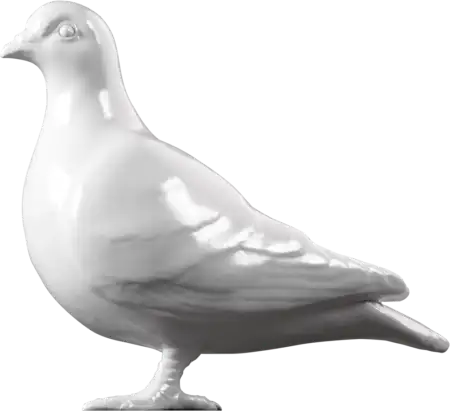Archaeology — 15th century
Spectacles
Pair of spectacles made from bone. Each frame is identical, and were cut from a large bone, likely to be the metacarpal bone of a bull. The circular frames are joined together by short handles connected by an iron rivet. The circular parts of the frames were cut out using a pair of dividers - the score lines from the dividers are visible. On the opposite side of the frame from the handle is a split to allow the lenses to be inserted. The split is closed by copper wire wrapped around lobes on the edge of the frame. The lenses would have sat in the v-shaped groove on the inside of the frames, but the lenses have not survived. One side of one of the frames is also missing - it has snapped off where the split was.
The size of these spectacles indicates they were designed to be worn with the rivet at the bridge of the nose and the rims pinching the nostrils. There are cut-outs along the edge of the handles where they join the frames, creating 'teeth' that helped the spectacles grip onto the nose. The three holes drilled into each of the handles probably extended the field of vision - the wearer could see through these on the edge of their vision, while looking through the lenses. The wearer would have to keep their head horizontal so that the spectacles did not fall off.
Spectacles first began to be made in Europe in Italy in the late 1200s. Production spread to the Netherlands and Belgium and then began in England in the 1400s. Thousands of spectacles were imported into London from the Low Countries each year in the 1400s, as customs records show. There were also several Dutch and Flemish spectacle-makers living in Southwark from the mid-1400s. However, spectacles rarely survive so this pair, found at Trig Lane, are very significant.
- Category:
- Archaeology
- Object ID:
- TL74[274]<2216>
- Object name:
- spectacles
- Object type:
- Artist/Maker:
- —
- Related people:
- Related events:
- Related places:
- Production date:
- 15th century
- Material:
bone, iron
- Measurements/duration:
- H 66 mm, W 67 mm, D 5 mm (overall)
- Part of:
- —
- On display:
- —
- Record quality:
- 100%
- Part of this object:
- —
- Owner Status & Credit:
Archaeological archive
- Copyright holder:
digital image © London Museum
- Image credit:
- —
- Creative commons usage:
- —
- License this image:
To license this image for commercial use, please contact the London Museum Picture Library.
